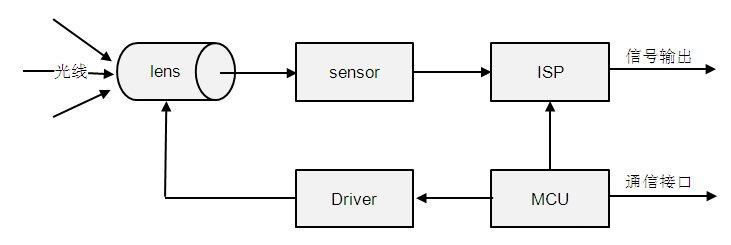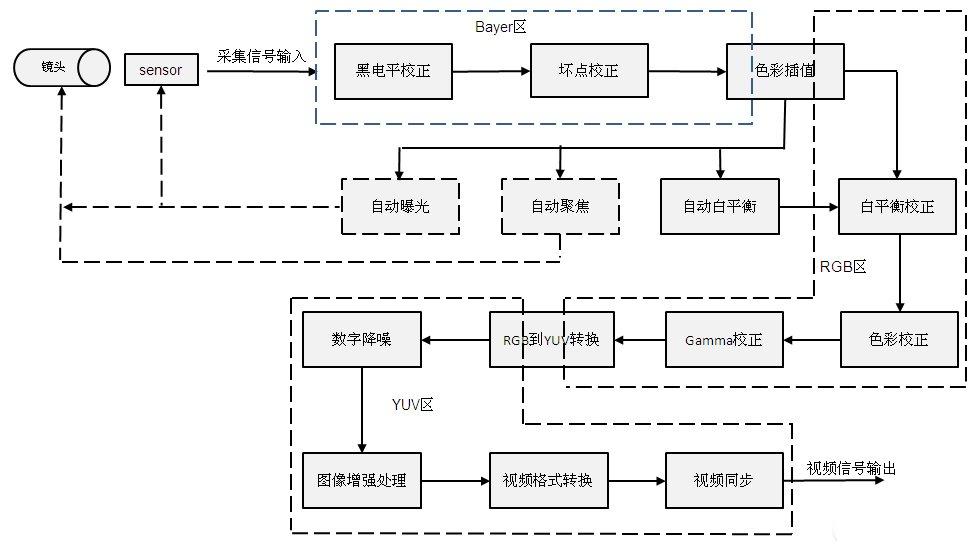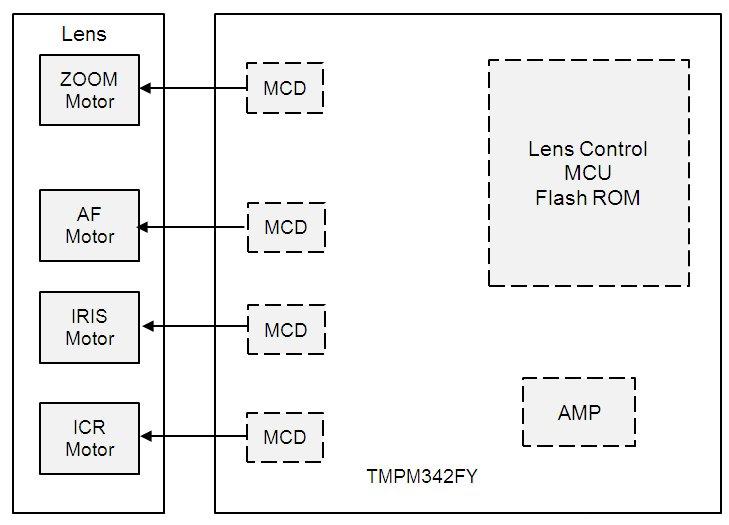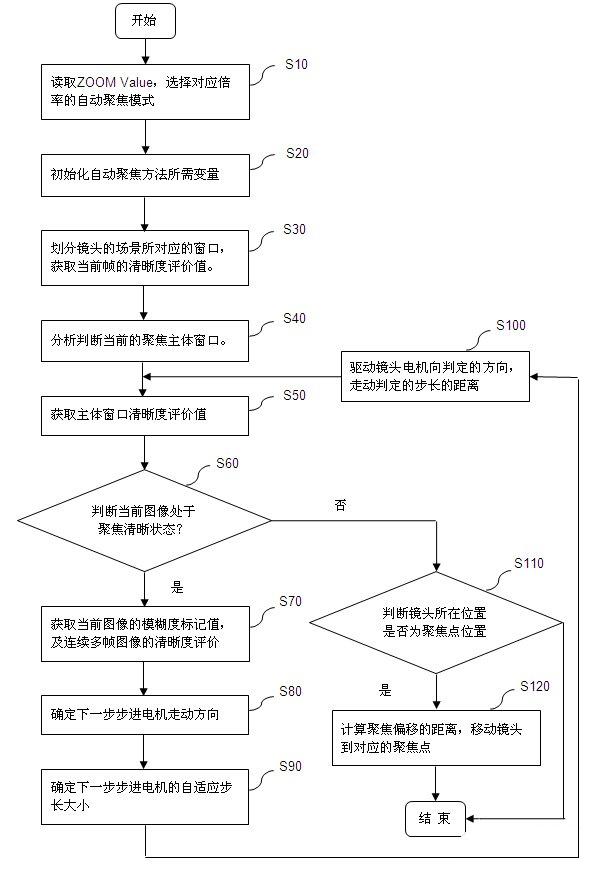Foreword
Security surveillance has entered the era of high-definition networks. Under this trend, the application of high-definition movements will be more and more, and the application fields will become more and more extensive. Due to the high technical threshold of the high-definition movement, there are not many manufacturers that can be developed in China, and most of them use foreign brands. In recent years, due to the SOC of the ISP (Image Signal Processing) processing chip, more camera sets have appeared, which can be used as cameras and integrated movements, but the sets are not flexible enough to meet the monitoring requirements of complex scenes. . The development of the integrated movement is developing in the direction of high resolution, network and high rate, and the SOC cannot meet the market changes in time. This paper uses the self-developed ISP and TMPM342 motor to drive the MCU assembly chip to realize the development of 5MP high-definition movement.
Integrated movement overview
The integrated movement refers to a camera with built-in lens, variable magnification and auto focus. It is a high-precision device integrating light, machine and electricity. It is widely used in ball machines, pan/tilt and other products. The working principle of the integrated movement is as follows: the image light enters the image sensor through the all-in-one lens, the image sensor images and outputs the image signal into the image signal processing system (ISP), and the image signal processing unit passes the color interpolation and white balance on the signal. , image enhancement and other processing, output standard image signal format. The control part (MCU) determines whether the image is clear according to the ISP's focus statistics and drives the motor to drive the lens zoom focus to achieve a clear image. The basic principle block diagram of the integrated movement is shown in Figure 1.

   Figure 1. Block diagram of the integrated movement
Integrated movement system design
The hardware of the integrated movement involves five parts: the integrated lens Lens, the image sensor sensor, the image signal processing system ISP, the control part MCU and the drive part Driver. The lens and image sensor are responsible for light collection and imaging. The ISP is responsible for the processing and processing of image signals to output high quality images. The control part is responsible for zooming and autofocusing.
This project is to design an ultra-low illumination 1/1.8" 5MP integrated HD movement. The all-in-one lens adopts the industry's first 1/1.8" target-one lens, with an oversized clear aperture. The image sensor adopts the industry-leading ultra-low illumination 1/1.8" target-surface stacked CMOS sensor IMX178. The image signal processing unit adopts an independently designed FPGA to realize ISP functions, which is flexible and efficient, and can realize more complicated functions. Control part and driver Part of the TMPM342, which integrates MCU and motor-driven MCD, has the characteristics of small size and flexible control.
Key part of the system design
The integrated movement is a high-precision equipment integrating light, machine and electricity. Its design is also a relatively complicated project. The technologies involved are: autofocus technology, automatic exposure technology, image processing technology, optical engineering technology, embedded Technology, video coding technology, network transmission technology and other related technologies.
The ISP part and the control part are the key parts of the system design. The ISP is related to the output image quality, and the control part is related to the zoom and focus performance, so that the picture is fast and clear.
ISP design and FPGA implementation
ISP (Image signal processing) is similar to the human eye's visual system (including the retina, cerebral cortex visual area, etc.) to process the imaging on the retina to produce a visual effect perceived by the human. The ISP processor processes the raw data output by the sensor to obtain an image that is consistent with the visual effect of the human eye.
The ISP processing flow is roughly as follows: the light enters the sensor through the lens to form image raw data (Bayer data), and the Bayer data enters the ISP processing unit, and the signal is adjusted to a suitable range by black level correction for subsequent processing, after level correction. The Bayer data is converted into RGB color block image signals by color interpolation. The RGB image signals are subjected to a series of correction processes such as white balance correction, color correction, and gamma correction to obtain a relatively clear image signal. After the RGB signals are converted into YUV signals, the digital signals are digitally reduced. A series of processing such as noise and image enhancement can obtain ideal image and video. Therefore, the ISP module includes black point flat correction, dead pixel correction, color interpolation, white balance correction, color correction, gamma correction, RGB to YUV conversion, digital noise reduction, image enhancement processing, video format conversion and other modules. The ISP principle block diagram is shown in Figure 2.

   Figure 2. ISP block diagram
The 5MP real-time data stream has high requirements on processor processing bandwidth and performance, so the ISP implementation is done using Altera's Cyclone V-series FPGAs. This way can be very flexible to deal with a variety of complex scenarios, Hikvision's ISP has been highly recognized by customers inside and outside the industry after years of market testing. In addition to the conventional ISP module, the FPGA also implements the focus statistics module required for autofocus and the AE module for auto exposure.
Motor drive and auto focus control section
The integrated movement has a zoom and auto focus function, which requires the cooperation of the MCU, the all-in-one lens and the motor drive part. The motor drive and MCU of this project adopt the TMPM342 chip which is one and the same. TMPM342 is a single-chip SOC integrated with Toshiba's MCU, MCD (Motor Control Driver) and PSC (Programmable Servo Controller). It can easily control the motor and aperture, and has built-in ARM CortexM3, which can realize more functions conveniently and flexibly. TMPM342 MCD can easily realize the control of stepper motor, DC motor and electromagnetic coil. Combined with MCU and AF, AE algorithm, it can easily realize auto focus and automatic exposure control. The PSC programmable servo control in the TMPM342 can implement the PID algorithm, which can be used to achieve anti-shake and other functions. Thus, it can be said that TMPM 342 is often suitable for the development of integrated movements. This project is to realize the driving of the lens motor and aperture through TMPM342, and realize the functions of auto focus and automatic exposure control. The internal block diagram and control schematic of TMPM342 are shown in Figure 3.

   Figure 3. Internal block diagram and control schematic of TMPM342FY
Autofocus principle and implementation
Autofocus is the most important feature in an integrated movement. The principle of focusing is very simple. The general process is as follows: first determine whether the image is clear, if it is clear, end the round of focusing process, if it is not clear, start searching for clear points around, until the search for a clear point ends the round of focusing process. Auto-focusing generally uses the hill-climbing method, which is a simple process of continuously moving in the direction of increasing value until there is no higher value in the surrounding adjacent state than the peak.
The autofocus system generally consists of two parts, one is the focus sharpness evaluation function, which is realized by the FPGA; the other part is the motor drive and focus control part, which is realized by TMPM342. The block diagram of the auto focus implementation is shown in Figure 4.

   Figure 4. Autofocus implementation block diagram
Conclusion
This paper introduces a 5MP real-time integrated HD movement implementation, using the industry's latest 5MP sensor and the latest 5MP all-in-one lens, FPGA to realize the self-designed ISP, through the TMPM342 to achieve the focus and zoom motor drive, At the same time, auto focus and auto exposure and other movement functions are realized. This is a simple, flexible, and cost-effective implementation.
HC-22 is a hydrocarbon refrigerant blend. The primary ingredients are hydrocarbons, which are flammable substances such as propane and butane. HC-22 is an ozone-safe, second-generation substitute for HCFC-22 without retrofitting. This product is currently available in 30LB cylinders.
HC-22 is a hydrocarbon refrigerant blend. The primary ingredients are hydrocarbons,which are flammable substances such as propane and butane. HC-22 is an ozone-safe, second-generation Substitute for HCFC-22 without retrofitting. This product is currently available in cylinders.
R22 Replacement Gas,Hydrocarbon Gas 22,Hc-22A Hydrocarbon Refrigerant,Substitute for HCFC-22
ZHEJIANG ZHONGLAN REFRIGERATION TECHNOLOGY CO.,LTD , http://www.uiszl.com